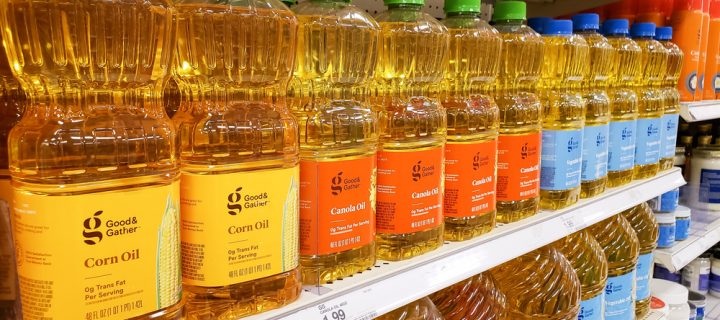Don’t burn your oil and keep some fat in your diet.
Butter, margarine, and olive oil: when it comes to lubricating your cooking, there are many ways to go about it. And many varying beliefs around what’s the best for your health.
It’s been believed for a long time that eating too much of something like butter will increase your risk of developing heart disease, as butter is full of saturated fat. Research explained by Harvard Public Health shows this isn’t necessarily the case. A study done back in 2014 showed that eating less dietary fat doesn’t necessarily do anything for your health.
It’s a controversial subject. Obviously, scientists don’t know everything about what goes on in your body. The trouble is, experts point out, that when you reduce your fat intake, people often replace this with sugary carbs, which isn’t doing your heart any favors. A diet high in sugar can increase your LDL (bad) cholesterol, cause excess inflammation, cause your body to store extra fat, and increase your blood pressure.
In addition, you do need some fat in your diet. And there are good fats and worse ones. It’s all about balance and eating food full of nutrients along with the right kinds of fat. (Think fewer processed meats, high sodium foods, and processed snacks, and more fruits and veggies, and omega-3 fatty acids).
All about your oil’s smoke point
So, what does all of this have to do with your cooking oil? Plenty. Many people have turned to cooking with vegetable oils in place of butter in the chase for a healthier lifestyle. But as this trend progressed another one arose: worrying about the temperature of your oil.
Every cooking oil has something called its “smoke point”. Smoke point is the point at which your oil, you guessed it, begins to burn and produce smoke. When this happens, you not only get burnt-tasting food, but you also alter the chemical composition of the oil.
Related: 7 Reachable Goals for Amazing Intellectual Wellness
Part of the oil’s triglyceride structure breaks apart from the fatty acids, releasing free fatty acids, polar compounds, and aldehydes. As things heat up even more, the oil breaks down into acrolein, something that is known to disrupt your DNA and cause cancer. In addition, cooking with an oil on high heat releases free radicals in your food, which also contribute to cancer. Furthermore, breaking your oil down over high heat is said to make it worse for your heart. And so, we come full circle.
Which cooking oils are best at which temperature
According to the North American Olive Oil Association, extra virgin olive oil’s smoke point is 350 to 410 degrees Fahrenheit, and olive oil’s smoke point is 390 to 468 degrees Fahrenheit.
People who love to get creative in the kitchen are quick to point out that, most of the time, you don’t reach your oil’s smoking point when cooking. So, worrying isn’t that important.
If you are concerned, keep the following facts in mind. When frying on high, turn to soybean oil, peanut oil, and sesame oil. When cooking over medium heat, go for olive, canola, avocado, or corn oil.
For making salad dressings, use an oil with a low smoking point such as flaxseed, walnut, or pumpkin oil. Sesame, olive, grape seed, and avocado oil can work well, too.
Eat a balanced diet and don’t forget that a bit of fat in your diet may help tie you over to your next meal and help you avoid indulging in sugary snacks. Match your oil to your temperature and enjoy!
photo credits: TonelsonProductions/Shutterstock.com












